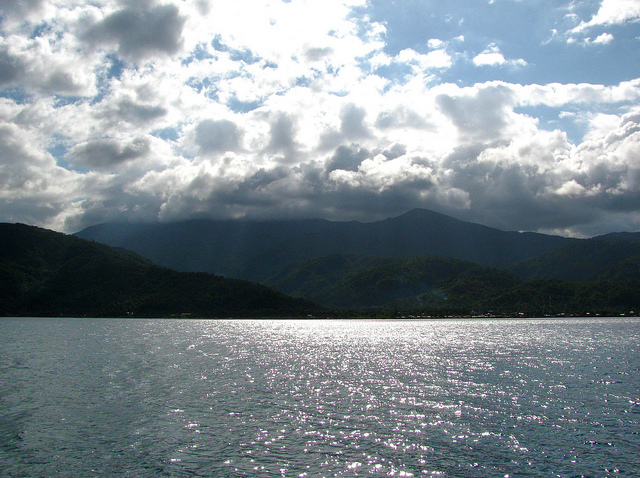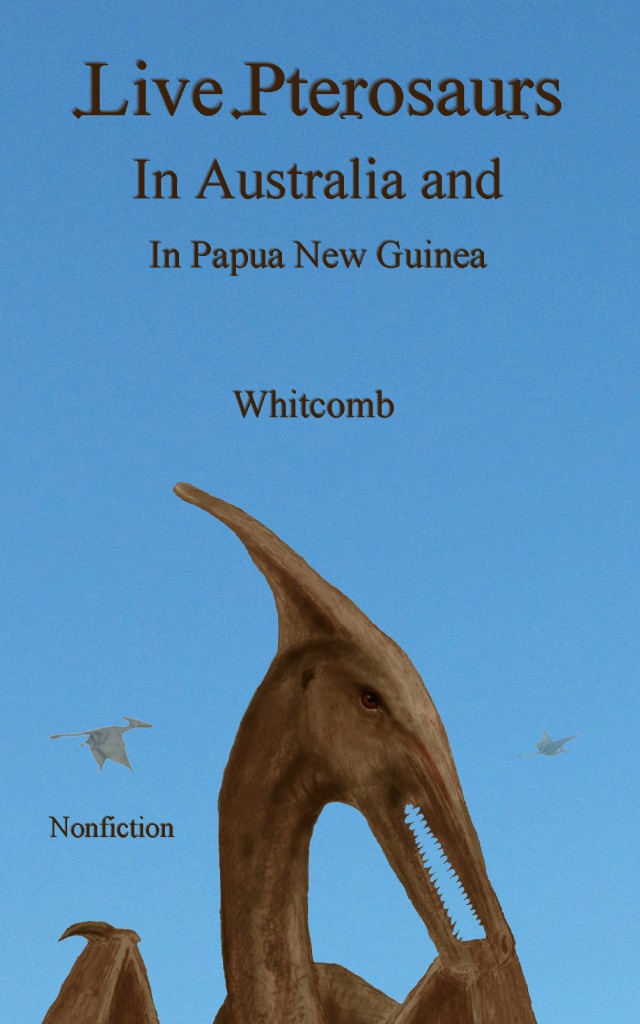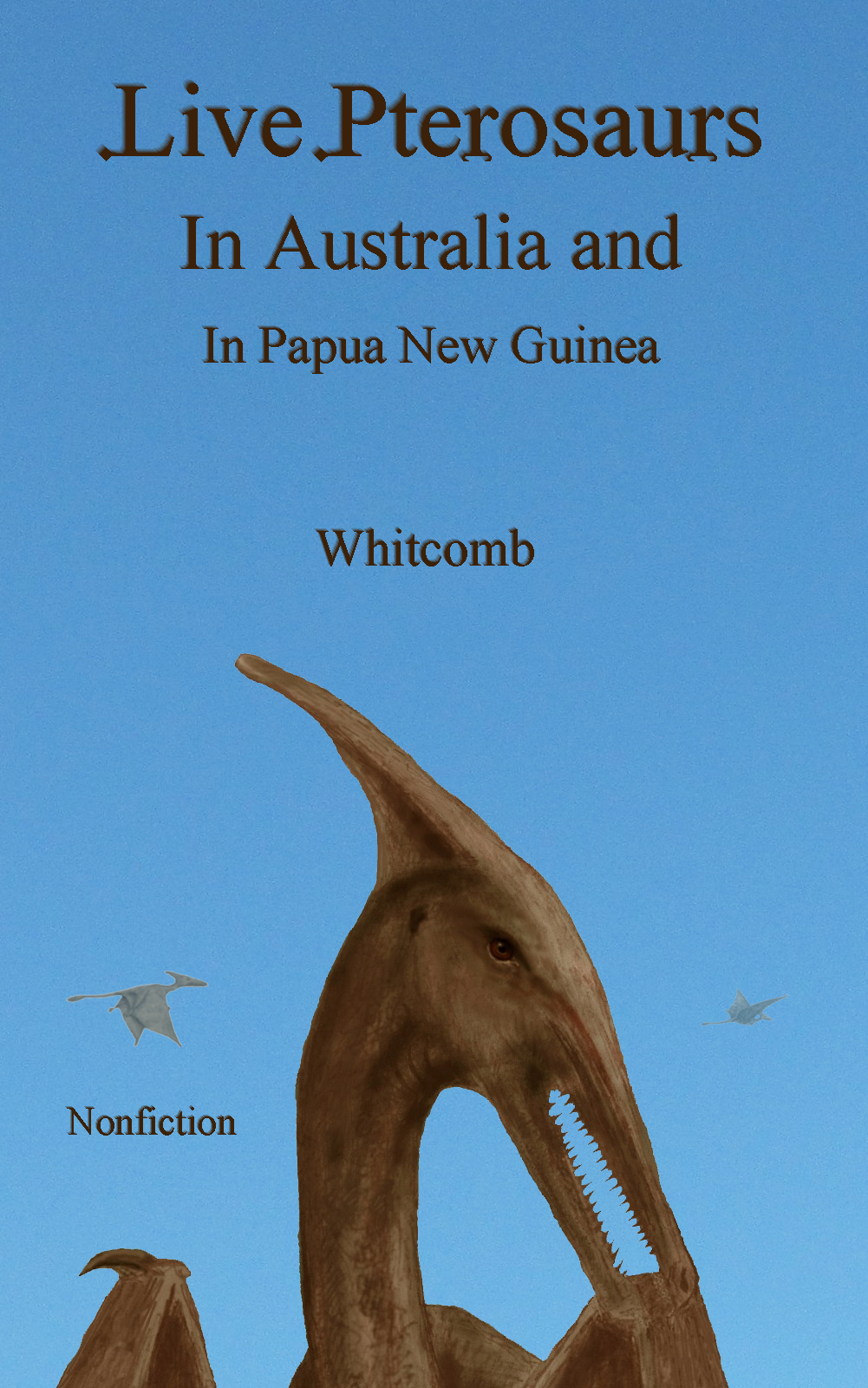Long-tailed pterosaurs, called by the name “ropen,” are reported in many areas surrounding the Pacific Ocean, including islands near the mainland of Asia. We now have considerable sighting evidence even in Hawaii, islands surrounded by vaste areas of the Pacific.
Two “Pterodactyls” Observed in Philippines in 2008
According to the eyewitness, “I think we’re not the only ones who saw it, because my classmate told me that there are sightings of this thing in Atimonan, Quezon [Province], just one-half hr travel from Pagbilao, and I was told by the local fisherman there that he saw it several times, flying above the sea.”
. . . Question: Did the two creatures have tails?
Answer: YES! they have long tails about 3 to 4 meters long . . .it is not a bird: They don’t have any feathers.
Question: Did you have a good view of them?
Answer: Yes! I was not the only one who saw it . . .
.
Quezon Province, Philippines
How can long-tailed pterosaurs fly across the Pacific Ocean and be found in many countries? Consider the size of some of these flying creatures. Some eyewitnesses estimate the wingspans: “30-50 feet” (Perth creature), “29 feet” (Finschhafen “pterodactyl”), “seven meters” (for one wing of the Lake Pung ropen, sighting around 1994). What could prevent such huge flying creatures from eventually expanding their habitat across the planet?
Additional Notes (Nov 5, 2012):
After publishing the above information, somebody responded with the idea that “many” sightings of apparent pterosaurs are misidentified Manta ray fish that jump out of the sea. But many problems are found in that conjecture.
- The great majority of sighting reports that I have received involved flying creatures that were not over the sea but flying over land. That eliminates the Manta ray conjecture for those sightings.
- Those few sighting that were of creatures over the sea—some of them involved long periods of flight, far longer than the few seconds it takes for a Manta ray fish to jump out of the sea and fall back into the water.
- Other sightings over the sea involved descriptions that were unlike anything we know about any Manta ray: bioluminescence, for example, or flying in pairs (ray fish don’t jump up out of the water in pairs in a way that would look like two pterosaurs flying in tandem).
The sighting mentioned above, in the Philippines, had critical points from the eyewitness, details absent above:
“. . . a LONG NECK and . . . a horn behind their heads. They have a long beak. I even saw their claws between their wings. . . . They seldom flap their wings, about every three to four seconds.”
That destroys the Manta ray conjecture for this particular sighting in the Philippines.
###
From the Third Edition of Live Pterosaurs in America:
Some birds migrate for many thousands of miles. . . . Since humans were inspired by birds to invent flying machines, give credit to birds for that inspiration. And give credit to the lowly Monarch Butterfly for migrating in large numbers for 2000 miles, with individuals crossing the Atlantic Ocean sometimes. But the wings of a giant ropen make the whole planet accessible . . .
[The eyewitness] stepped out into his front yard and saw, about 100 feet high, a gliding ”pterodactyl.”
Pterosaurs in the Southwest Pacific
For Americans (and perhaps citizens of other developed countries) who know about recent sighting reports of apparent living pterosaurs, the best known area for sightings may be in Papua New Guinea.
Live Pterosaurs in Australia and in Papua New Guinea
I believe in living pterosaurs and hope they will soon be officially discovered. More important, I believe in you, that you can soar above dogmatic assumptions about extinctions.
_________________________________________________________________
Live Pterosaurs in Australia and in Papua New Guinea (nonfiction e-book) now FREE
_________________________________________________________________






